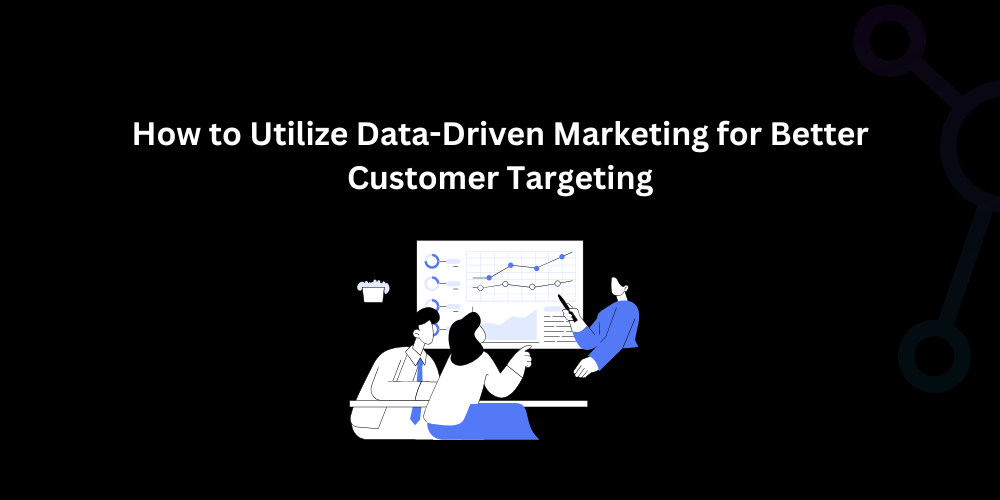
In today’s competitive digital landscape, businesses need to make informed decisions to reach the right audience effectively. One powerful approach to achieve this is data-driven marketing. By harnessing the power of data, businesses can better understand their customers and tailor marketing efforts that resonate with their needs, preferences, and behaviors. In this blog, we’ll explore how data-driven marketing works and how it can enhance your customer targeting strategy.
What is Data-Driven Marketing?
Data-driven marketing refers to the use of customer data, insights, and analytics to guide marketing strategies and decisions. Instead of relying on assumptions or guesswork, businesses leverage real data from various sources to optimize marketing campaigns and target the right people with personalized messages. By analyzing customer behavior, purchasing patterns, and interactions with your brand, you can refine your marketing efforts and achieve better results.Why is Data-Driven Marketing Important?
The key advantage of data-driven marketing is that it allows businesses to make smarter decisions based on real, actionable insights. Here’s why it’s so important:- Improved Targeting: By analyzing customer data, you can identify specific demographics, interests, and behaviors, allowing you to target the right audience more precisely.
- Personalization: Data enables you to tailor content, offers, and messaging to individual customers, increasing engagement and conversion rates.
- Better ROI: With data-backed decisions, businesses can allocate resources effectively, optimizing campaigns and reducing wasteful spending on ineffective marketing channels.
- Enhanced Customer Experience: By understanding customer preferences and pain points, you can provide more relevant and valuable experiences, fostering stronger customer relationships.
Steps to Utilize Data-Driven Marketing for Better Customer Targeting
1. Collect Relevant Customer Data
The first step in any data-driven marketing strategy is gathering data from reliable sources. You can collect data through:- Website analytics (e.g., Google Analytics)
- Social media platforms
- Customer surveys and feedback
- CRM systems
- Transactional data from e-commerce platforms
2. Analyze and Segment Your Audience
Once you have the data, the next step is to analyze it to identify patterns and trends. Segment your audience based on factors such as:- Demographics: Age, gender, location, etc.
- Behavior: Website visits, time spent on pages, interactions with ads or emails.
- Purchasing History: Past purchases, preferred products or services, frequency of purchases.
3. Personalize Marketing Campaigns
Using the insights gained from audience segmentation, you can craft tailored marketing campaigns for each segment. For example:- Personalized Emails: Send targeted emails with product recommendations based on past purchases or browsing behavior.
- Tailored Ads: Run ads on social media platforms with content relevant to the user’s interests or recent searches.
- Content Customization: Provide blog posts, videos, or offers that speak to specific customer needs or pain points.
4. Test and Optimize Campaigns
Data-driven marketing isn’t a one-time process; it requires constant testing and optimization. Monitor the performance of your campaigns using metrics like:- Click-through rates (CTR)
- Conversion rates
- Customer acquisition costs
- Return on investment (ROI)
5. Use Predictive Analytics
Predictive analytics is another valuable tool in data-driven marketing. By analyzing historical data, you can predict future customer behavior, such as:- Likelihood to make a purchase
- Ideal time for engagement
- Probability of churn
Key Tools for Data-Driven Marketing
To effectively execute a data-driven marketing strategy, consider using the following tools:- Google Analytics: For tracking website performance and user behavior.
- Customer Relationship Management (CRM) Systems: To manage customer interactions and sales data.
- Email Marketing Platforms: Such as Mailchimp or HubSpot, for personalized email campaigns.
- Social Media Analytics: Platforms like Facebook Insights or Instagram Analytics help monitor engagement.





